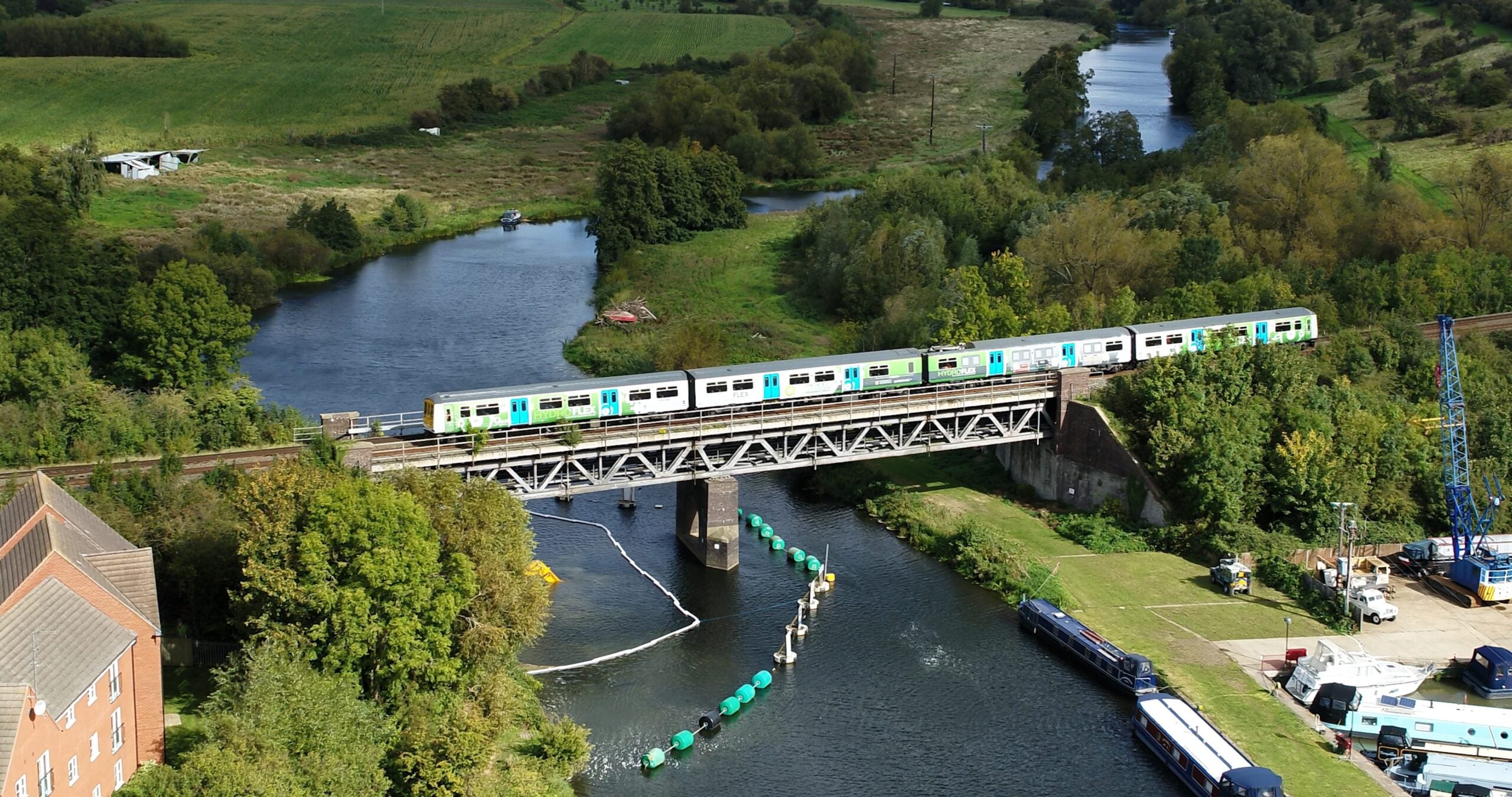
The perks of using hydrogen as an alternative fuel are not unknown. In 2008, the European Commission had already identified hydrogen as one of the new technologies that could help achieve a 60% to 80% reduction of greenhouse gases by 2050.
Today, the UK Transport Secretary Grant Shapps has announced the beginning of trials for HydroFLEX, the country’s first hydrogen-powered train.

Discover B2B Marketing That Performs
Combine business intelligence and editorial excellence to reach engaged professionals across 36 leading media platforms.
Considered a huge step towards helping the UK achieve its 2050 net-zero emission goals, the train represents a key milestone for the rail industry and its commitment to sustainability. Here is what you need to know about the project.
What is HydroFLEX?
HydroFLEX is the UK’s first hydrogen-powered train. The project – a partnership between the University of Birmingham and rolling stock company Porterbrook – took two years to develop as well as £1m in investment.

US Tariffs are shifting - will you react or anticipate?
Don’t let policy changes catch you off guard. Stay proactive with real-time data and expert analysis.
By GlobalDataHydroFLEX has also received support from the UK Government, whose Department for Transport (DfT) contributed £750,000 ). Out of £750,000, some £350,000 come from the DfT’s First of a Kind competition while another £400,000 was jointly provided by the DfT and Innovate UK.
How does it work?
HydroFLEX will not emit greenhouse gases, using instead hydrogen and oxygen to produce electricity, water and heat. The technology is expected to become available by 2023 when trains currently in use will be retrofitted with it.
The University of Birmingham is already working on the project’s next phase, which involves a hydrogen and battery-powered module that could be fitted underneath trains, allowing for more space in carriages.
“As we continue on our road to a green recovery, we know that to really harness the power of transport to improve our country – and to set a global gold standard – we must truly embed change,” said Shapps. “That’s why I’m delighted that through our plans to build back better we are embracing the power of hydrogen and the more sustainable, greener forms of transport it will bring.”
“The HydroFLEX project is a great example of how world-class research and development, together with the right industry partnerships, can deliver decarbonisation technologies that are both innovative and practical,” said University of Birmingham head of the college engineering and physical sciences Professor Stephen Jarvis.
“Successful mainline testing is a major milestone for HydroFLEX and is a clear demonstration of the important role hydrogen has to play in the UK’s rail industry.”
What was the industry reaction?
The industry’s overall response was positive. Porterbrook CEO Mary Grant reiterated the company’s commitment to delivering “a carbon-neutral and sustainable railway”.
“Today’s mainline testing of HydroFLEX achieves another important milestone on this journey,” she added. “I’m also delighted to be able to announce our intention to start producing HydroFLEX trains, creating the world’s first electric and hydrogen-powered bi-mode rolling stock, as well as generating significant opportunities for the UK supply chain.”
“As we look to generate an economic recovery, clean rail technologies can help spur economic growth across the UK, whilst also helping our rail industry to develop a competitive advantage from which it could export more overseas too,” commented Railway Industry Association (RIA) technical director David Clarke.
The future of hydrogen in the UK
While unveiling the new train, Shapps also announced the DfT’s plans to transform the Tees Valley, a region in the north-east of England, into a hydrogen transport hub.
The plan’s aim is to invest in hydrogen as an alternative fuel while creating hundreds of jobs in the area. The DfT has commissioned a masterplan to understand the feasibility of the hub. The research, to be published in January 2021, will focus on how hydrogen can power buses, heavy goods rail, maritime and aviation across the UK.
Through the government-sponsored Hydrogen for Transport programme, £6.3m will be destined to a hydrogen refuelling station as well as 19-powered refuse vehicles in Glasgow.
“The announcement today on the further progress of the Hydrogen for Transport Programme is a demonstration of the UK Government’s commitment to developing a hydrogen infrastructure as part of its efforts to decarbonise transport and encourage the shift to zero-emission vehicles,” said techUK CEO Julian David.
“The introduction of fleets of low carbon, self-powered trains, alongside a rolling programme of electrification, can help ensure rail leads the country’s decarbonisation revolution, generating jobs and investment in the process,” added RIA’s Clarke.



